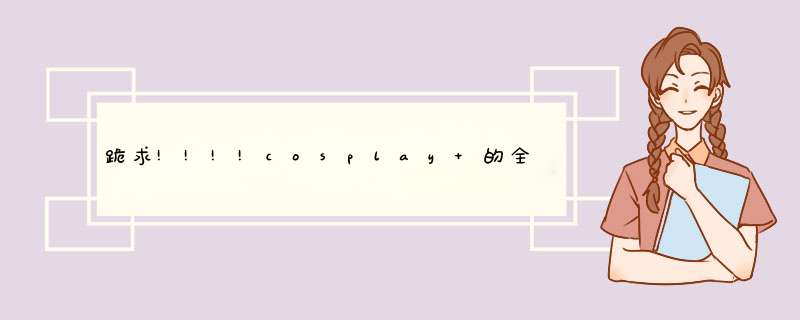
在西方国家,每年的十月三十一日,有个Halloween,辞典解释为 “The eve of All Saints'Day”,中文译作:万圣节之夜。
关于万圣节,人们或多或少都有了一定的感性认知:知道万圣节期 间,许多公共场所乃至居家院落,都会布置上很多装璜,诸如各式鬼怪 呀、南瓜灯呀、还有黑猫以及巫婆的扫帚之类;孩子们会穿上每年不一 样的万圣节服装,拎着南瓜灯的提篓去挨家挨户地讨糖,说是“trick or treak”。除此之外,你还想多知道一点吗?我们在此简单介绍一下 万圣节的由来与习俗。
一、万圣节的由来:
关于万圣节由来的,传说最多的版本认为,那是源于基督诞生前的古西欧国家,主要包括爱尔兰、苏格兰和威尔士。这几处的古西欧人叫德鲁伊特人。德鲁伊特的新年在十一月一日,新年前夜,德鲁伊特人让年轻人集队,戴着各种怪异面具,拎着刻好的萝卜灯(南瓜灯系后期习俗,古西欧最早没有南瓜),他们游走于村落间。这在当时实则为一种秋收的庆典;也有说是“鬼节”,传说当年死去的人,灵魂会在万圣节的前夜造访人世,据说人们应该让造访的鬼魂看到圆满的收成并对鬼魂呈现出丰盛的款待。所有篝火及灯火,一来为了吓走鬼魂,同时也为鬼魂照亮路线,引导其回归。
在中世纪的中欧,曾有过基督教摧毁异教徒的历史。可是新年夜前的祭祀庆典从未真正消除,不过以巫术的形式出现。这也就是为什么我们现在的万圣节里,还留有巫婆的扫帚、黑猫、咒语等痕迹。
二、Halloween一词的产生:
很多民族都在万圣节前夜有庆典聚会,这又被叫做“All Hallow E'en”、“The Eve of All Hallows”、“Hallow e'en”,或者“The eve of All Saintas'Day”。最终约定俗成演变成了“Halloween”,中文意译成了万圣节之夜。
三、“Trick or treat”的传说:
孩子们今天着装挨家要糖的习俗,据说起源于爱尔兰。古西欧时候的爱尔兰异教徒们,相信在万圣节前夜鬼魂会群集于居家附近,并接受设宴款待。因而,在“宴会”结束后,村民们就自己扮成鬼魂精灵,游走村外,引导鬼魂离开,避邪免灾。于此同时,村民们也都注意在屋前院后的摆布些水果及其他食品,喂足鬼魂而不至于让它们伤害人类和动物或者掠夺其他收成。后来这习俗一直延续下来,就成了孩子们取笑不慷慨之家的玩笑。
至于南瓜灯也至少有两种说法。一种说是人挖空了南瓜又刻上鬼脸点上烛火用以驱散鬼魂的;另一种说是鬼魂点上的烛火,试图骗取人们上当而跟着鬼魂走,所以人们就在南瓜表面刻上一个嘲讽的脸面,用以调笑鬼魂:哼!傻瓜才会上你的当。传说因为首用南瓜的是一位爱尔兰人Jack,所以人们又将鬼脸南瓜灯叫做Jack-O-Lantern。
四、现在的万圣节
万圣节流传到今天已经完全没有了宗教迷信色彩,它成了一个孩子们的节目,也是年轻人化装舞会的节目。
社会对节日的活动也一直做着正面的引导:要求大人教育孩子们不做恐吓性的恶作剧,也要求大人带孩子一起出门(一般是大人架车停在路边,小孩去敲门讨糖)。大人应该要求孩子只许去门口有节日布置的并点了灯的人家,否则不去打扰。另外讨糖过程的始终必须站在大门口等待,不许进屋,讨回的糖也要交大人检查后才许吃。对接待孩子的人家也要求不给自家制作的食品也不给未包装的食品。
公共场合以及居家周围的节日布置都是自愿的。鬼脸南瓜灯、白网黑蜘蛛等,都是节日的装点,已全然没有骇人之鬼魅色彩。有的女学生还端端在这时候会买一对南瓜或者鬼骷髅的耳环来佩带。如果有哪家的布置做得过分恐怖了,会遭到有关方面的制止,媒体也会令其暴光,让公众指责。
万圣节的服装,也是万人万相,不是单调的大鬼小鬼了。有许多渠道教授人们如何制作万圣节服装。比如说制作最简单的鬼服就用一张白床单顶在头上,别忘了扣两个洞留出眼睛就是;若是要扮演魔术师,就穿上黑衣黑裤,再戴上黑礼帽,并在礼帽与头顶之间藏一只绒毛小兔备用;还教大人如何把孩子打扮成小天使,白衣白裤,再从背后怎么绑一个手电筒在头上;也有教如何把孩子打扮成他们喜欢的卡通形象的。当然服装、道具业的商人们,就更有文章可做了。
学校在万圣节是不放假的。有时学校出面组织晚会,有时不甘寂寞的学生们也会自己主办小型晚会;而朋友、家人间互寄贺卡祝万圣节快乐则成为每年十月间流行的习俗。如今网际网路的发达使得送万圣卡更为方便经济,有的网站还别出心裁地设计了各种具有声响动画效果的万圣卡,如:wwwcardmastercom等,免费让大家使用。
总之,万圣节已成为西方人一个很普通的季节性节日。有很多人将此看作秋的结束以及冬的到来。万圣节一过,人们就开始期盼感恩节、圣诞节乃至新年了。
在西方国家,每年的10月31日,有个“Halloween”,辞典解释为“The eve of All Saints'Day”,中文译作:“万圣节之夜”。万圣节是西方国家的传统节日。这一夜是一年中最“闹鬼”的一夜,所以也叫“鬼节”。
两千多年前,欧洲的天主教会把11月1日定为“天下圣徒之日” (ALL HALLOWS DAY) 。“HALLOW” 即圣徒之意。传说自公元前五百年,居住在爱尔兰、苏格兰等地的凯尔特人 (CELTS) 把这节日往前移了一天,即10月31日。他们认为该日是夏天正式结束的日子,也就是新年伊始,严酷的冬季开始的一天。那时人们相信,故人的亡魂会在这一天回到故居地在活人身上找寻生灵,借此再生,而且这是人在死后能获得再生的唯一希望。而活着的人则惧怕死魂来夺生,于是人们就在这一天熄掉炉火、烛光,让死魂无法找寻活人,又把自己打扮成妖魔鬼怪把死人之魂灵吓走。之后,他们又会把火种烛光重新燃起,开始新的一年的生活。传说那时凯尔特人部落还有在10月31日把活人杀死用以祭奠死人的习俗。
万圣节的由来英文版(转载0
Halloween is an annual celebration, but just what is it actually a celebration of And how did this peculiar custom originate Is it, as some claim, a kind of demon worship Or is it just a harmless vestige of some ancient pagan ritual
The word itself, "Halloween," actually has its origins in the Catholic Church It comes from a contracted corruption of All Hallows Eve November 1, "All Hollows Day" (or "All Saints Day"), is a Catholic day of observance in honor of saints But, in the 5th century BC, in Celtic Ireland, summer officially ended on October 31 The holiday was called Samhain (sow-en), the Celtic New year
One story says that, on that day, the disembodied spirits of all those who had died throughout the preceding year would come back in search of living bodies to possess for the next year It was believed to be their only hope for the afterlife The Celts believed all laws of space and time were suspended during this time, allowing the spirit world to intermingle with the living
Naturally, the still-living did not want to be possessed So on the night of October 31, villagers would extinguish the fires in their homes, to make them cold and undesirable They would then dress up in all manner of ghoulish costumes and noisily paraded around the neighborhood, being as destructive as possible in order to frighten away spirits looking for bodies to possess
Probably a better explanation of why the Celts extinguished their fires was not to discourage spirit possession, but so that all the Celtic tribes could relight their fires from a common source, the Druidic fire that was kept burning in the Middle of Ireland, at Usinach
Some accounts tell of how the Celts would burn someone at the stake who was thought to have already been possessed, as sort of a lesson to the spirits Other accounts of Celtic history debunk these stories as myth
The Romans adopted the Celtic practices as their own But in the first century AD, Samhain was assimilated into celebrations of some of the other Roman traditions that took place in October, such as their day to honor Pomona, the Roman goddess of fruit and trees The symbol of Pomona is the apple, which might explain the origin of our modern tradition of bobbing for apples on Halloween
The thrust of the practices also changed over time to become more ritualized As belief in spirit possession waned, the practice of dressing up like hobgoblins, ghosts, and witches took on a more ceremonial role
The custom of Halloween was brought to America in the 1840's by Irish immigrants fleeing their country's potato famine At that time, the favorite pranks in New England included tipping over outhouses and unhinging fence gates
The custom of trick-or-treating is thought to have originated not with the Irish Celts, but with a ninth-century European custom called souling On November 2, All Souls Day, early Christians would walk from village to village begging for "soul cakes," made out of square pieces of bread with currants The more soul cakes the beggars would receive, the more prayers they would promise to say on behalf of the dead relatives of the donors At the time, it was believed that the dead remained in limbo for a time after death, and that prayer, even by strangers, could expedite a soul's passage to heaven
The Jack-o-lantern custom probably comes from Irish folklore As the tale is told, a man named Jack, who was notorious as a drunkard and trickster, tricked Satan into climbing a tree Jack then carved an image of a cross in the tree's trunk, trapping the devil up the tree Jack made a deal with the devil that, if he would never tempt him again, he would promise to let him down the tree
According to the folk tale, after Jack died, he was denied entrance to Heaven because of his evil ways, but he was also denied access to Hell because he had tricked the devil Instead, the devil gave him a single ember to light his way through the frigid darkness The ember was placed inside a hollowed-out turnip to keep it glowing longer
The Irish used turnips as their "Jack's lanterns" originally But when the immigrants came to America, they found that pumpkins were far more plentiful than turnips So the Jack-O-Lantern in America was a hollowed-out pumpkin, lit with an ember
So, although some cults may have adopted Halloween as their favorite "holiday," the day itself did not grow out of evil practices It grew out of the rituals of Celts celebrating a new year, and out of Medieval prayer rituals of Europeans And today, even many churches have Halloween parties or pumpkin carving events for the kids After all, the day itself is only as evil as one cares to make it
欢迎分享,转载请注明来源:品搜搜测评网

 微信扫一扫
微信扫一扫
 支付宝扫一扫
支付宝扫一扫
